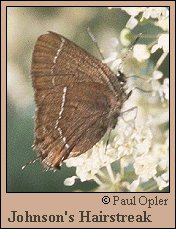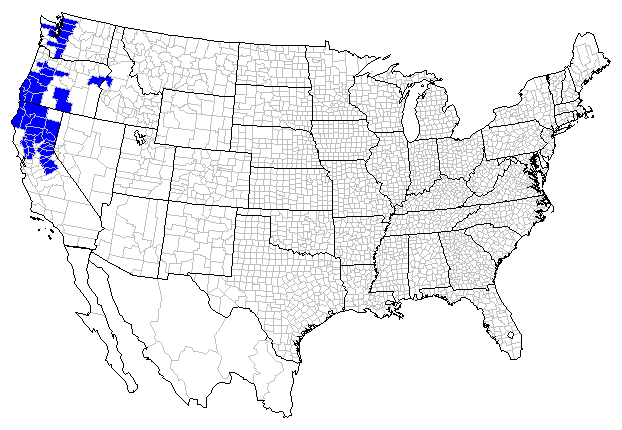 |
 

 |



Johnson's Hairstreak (Callophrys johnsoni [Skinner])
Wing span: 1 1/4 - 1 3/8 inches (3.2 - 3.5 cm).
Identification: Upperside of males rusty brown, females more orange. Underside gray-brown, darker toward wing bases. Postmedian line is white bordered with black on the inside edge.
Life history: Eggs are laid on the host; caterpillars feed on all exposed parts of the plant. Chrysalids hibernate in the mistletoe mass.
Flight: One flight from May-July.
Caterpillar hosts: Pine dwarf mistletoe (Arceuthobium campylopodum) which grows on conifers.
Adult food: Flower nectar.
Habitat: Coniferous forests, especially old-growth.
Range: Very local and scarce. Pacific Slope mountains from British Columbia south to central California.
Conservation: All populations are worthy of conservation concern.
The Nature Conservancy Global Rank: G3 - Very rare or local throughout its range or found locally in a restricted range (21 to 100 occurrences). (Threatened throughout its range).
Management needs: Maintain old-growth forests with this species' habitat requirements.
References:
Scott, J. A. 1986. The butterflies of North America. Stanford University Press,
Stanford, Calif. 583 pages, 64 color plates.
Tilden, J. W. 1986. A field guide to western butterflies. Houghton-Mifflin Co.,
Boston, Mass. 370 pages, 23 color plates.
Author: Jane M. Struttmann

